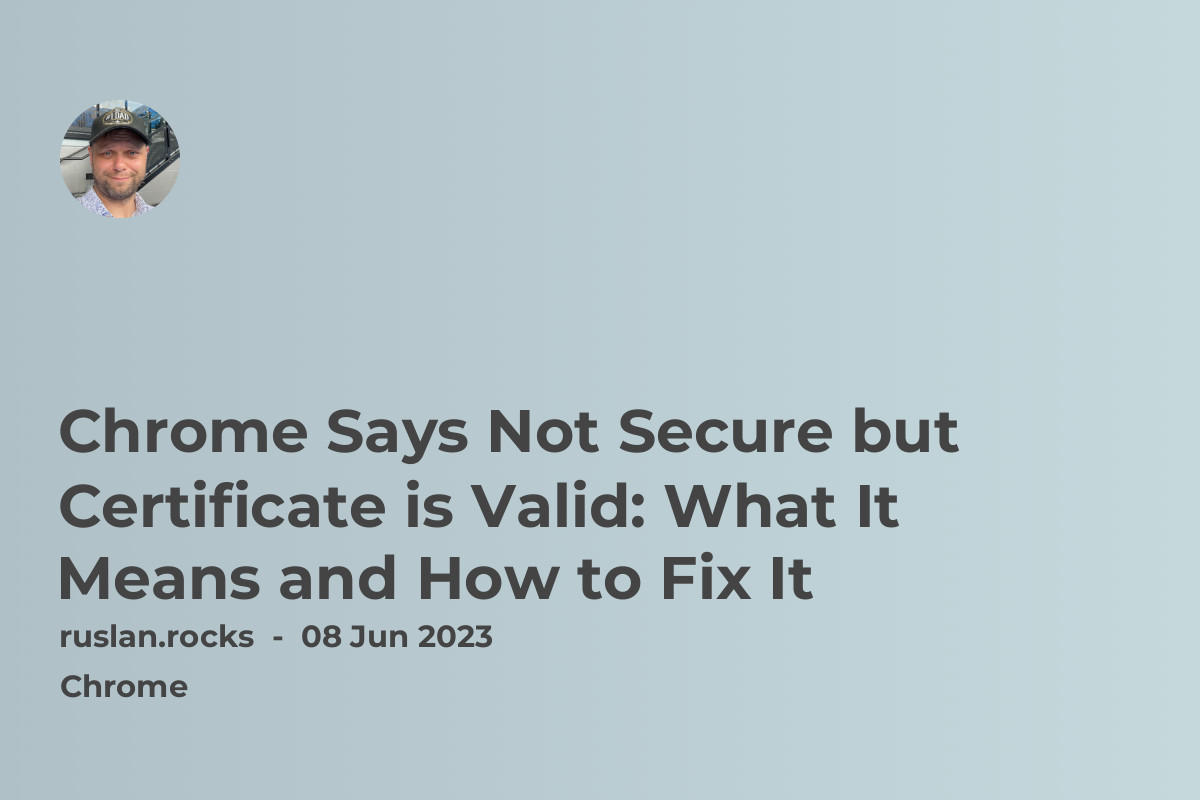
Have you ever tried to access a website, only to be greeted with a message from Google Chrome saying that the site is not secure? What's even more confusing is when Chrome says the website's security certificate is valid. So, what does it mean when Chrome says not secure but the certificate is valid, and how can you fix it? This article will help you understand the issue and offer solutions to resolve it.
What is Chrome Saying?
What does it mean when Chrome says a site is not secure but the certificate is valid?
When Chrome says a site is not secure, it means that the website does not have an SSL certificate. An SSL certificate is used to encrypt the data being transmitted between a website and the user's browser. Encryption ensures that sensitive information, such as passwords, credit card details, and other personal information, is secure and cannot be intercepted by hackers.
However, if the website does have an SSL certificate installed, but Chrome still shows it as not secure, it means there is an underlying issue preventing the certificate from being fully recognized by the browser. The certificate may be valid, but Chrome has detected something else that poses a potential security risk.
Why is Google Chrome giving a secure error?
If Chrome identifies an issue with a site's SSL certificate or connection, it will display a 'Not Secure' warning. This warning could be triggered by several things such as an expired SSL certificate, self-signed certificate, domain mismatch, or an invalid or non-trusted certificate.
Why is Chrome saying a site is not secure when it previously was?
If a website switched from HTTP to HTTPS, but Chrome still shows it as not secure, it could be due to the browser's cache. Clearing the cache will often resolve this issue. Additionally, if the website's SSL certificate is not configured correctly or has expired, Chrome will show a not secure warning.
How to Fix Chrome Saying Not Secure but the Certificate is Valid
Clear Your Browser's Cache
Chrome may be showing a site as not secure, even though it has an SSL certificate installed, due to an outdated cache. Clearing the cache can resolve this issue. To do this, go to the top right-hand corner of the browser, click on the three-dot menu, and select 'Settings.' From there, click on 'Privacy and Security' and then 'Clear Browsing Data.' Select 'Cached images and files' and then click 'Clear Data.' This will clear the cache, and you should be able to access the site without the warning.
Check the Date and Time on Your Computer
If the date and time on your computer are incorrect, it may cause the SSL certificate to appear as invalid. Ensure that the date and time are set correctly and try accessing the site again.
Update Google Chrome
Outdated versions of Chrome may encounter issues with SSL certificates, causing the browser to show the not-secure warning. Updating Chrome to its latest version can resolve this issue. To do this, go to the three-dot menu, select 'Settings,' click on 'Help,' and then 'About Google Chrome.' From there, Chrome will automatically check for and install any available updates.
Verify the SSL Certificate
Use an online SSL checker to verify the website's SSL certificate. This will help identify any issues with the certificate, such as an invalid or self-signed certificate, certificate expiration, or domain mismatch errors.
Try a Different Browser
If the above solutions do not work, try accessing the site using a different browser, such as Firefox. If the site is accessible without the not-secure warning on another browser, the issue may be with Chrome and not the site's SSL certificate.
In conclusion, when Chrome says not secure but the certificate is valid, there are several reasons and fixes. Check the SSL certificate, clear the cache, update Chrome, verify the Date and Time on the device, or try another browser. These solutions will ensure that you can access secure websites without any warnings from Chrome.
Here are some recommended sources:
